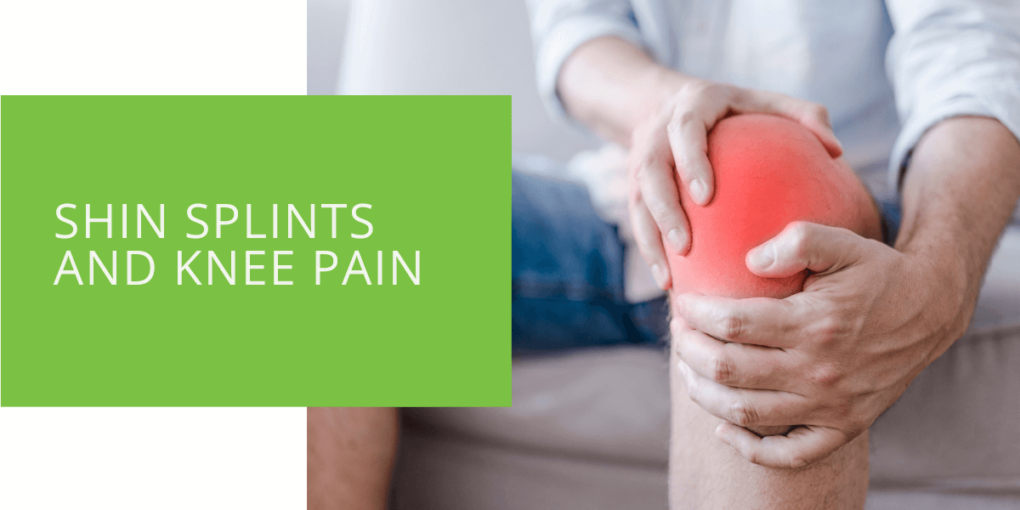Understanding Shin Splints and Knee Pain
Shin splints and knee pain are common lower leg ailments that can significantly impact an individual's mobility and quality of life. This comprehensive guide will delve into the details of these conditions, including their symptoms, causes, diagnosis, treatment options, and preventive measures.
Key Takeaways
- Shin splints and knee pain can result from various factors, including overuse, biomechanical issues, and structural abnormalities, impacting individuals of all ages and activity levels.
- Prevention strategies such as gradual progression of activity, proper footwear selection, and muscle strengthening exercises can help reduce the risk of developing shin splints and knee pain.
- Timely diagnosis and comprehensive treatment, including rest, physical therapy, and orthotic support, are essential for managing shin splints and knee pain and restoring mobility and function.
What are Shin Splints and Knee Pain?
Explaining Shin Pain
Shin splints, medically known as medial tibial stress syndrome (MTSS), refer to pain along the shinbone (tibia), the large bone in the front of the lower leg. This condition typically occurs due to repetitive stress on the shinbone and the tissues attaching the shinbone to the muscles surrounding it.
Introduction to Knee Pain
Knee pain, conversely, encompasses discomfort around the knee joint, affecting individuals of all ages and activity levels. It can stem from various causes, including injury, overuse, or underlying medical conditions.
Symptoms of Shin Splints and Knee Pain
Recognizing Symptoms of Shin Splints
Symptoms of shin splints may include:
- Pain along the inside of the shinbone
- Tenderness or soreness to the touch
- Swelling in the lower leg
- Discomfort that worsens with activity
Identifying Symptoms of Knee Pain
Symptoms of knee pain can manifest as:
- Sharp or dull pain around the knee joint
- Swelling or inflammation in the knee area
- Difficulty bearing weight on the affected knee
Diagnosing Shin Splints and Knee Pain
How Shin Splints are Diagnosed
Shin splints are typically diagnosed through physical examination, imaging tests (such as X-rays or MRI), and a review of the patient's medical history. These evaluations help healthcare providers rule out other potential causes of lower leg pain, such as stress fractures or compartment syndrome.
Diagnosing Knee Pain
Diagnosing knee pain involves a thorough clinical evaluation, including physical examination maneuvers to assess range of motion, stability, and tenderness around the knee joint. Imaging techniques like X-rays, MRI scans, or CT scans may also be used to visualize internal structures and identify underlying abnormalities.
Causes of Shin Splints and Knee Pain
Understanding the Causes of Shin Splints
Shin splints often arise from:
- Overuse or repetitive stress on the shinbone
- Engaging in high-impact activities, such as running or jumping, without proper conditioning
- Wearing improper footwear or having biomechanical issues, such as flat feet or high arches
- Weakness or imbalance in the muscles of the lower leg
Common Causes of Knee Pain
Knee pain can result from various factors, including:
- Acute injuries, such as ligament sprains or meniscus tears
- Chronic conditions like arthritis or tendinitis
- Overuse or repetitive strain from activities like running, cycling, or squatting
- Structural abnormalities, such as misalignment or mal tracking of the kneecap (patella)

Risk Factors for Shin Splints and Knee Pain
Factors Contributing to Shin Splints
Several factors may increase the risk of developing shin splints, including:
- Engaging in high-impact activities without proper conditioning or gradual progression
- Having flat feet or high arches can alter biomechanics and increase stress on the lower leg
- Wearing worn-out or inappropriate footwear that fails to provide adequate support and cushioning
Risk Factors for Knee Pain
Risk factors for knee pain may include:
- Previous knee injuries or surgeries
- Excess weight or obesity, which can place added strain on the knee joints
- Poor muscle strength or flexibility, particularly in the muscles surrounding the knee
Preventing Shin Splints and Knee Pain
Tips to Prevent Shin Splints
To reduce the risk of shin splints, individuals can:
- Gradually increase the intensity and duration of physical activity
- Incorporate proper warm-up and cool-down routines before and after exercise
- Wear supportive footwear designed for their specific foot type and activity level
- Strengthen the muscles of the lower leg and improve overall lower limb biomechanics through targeted exercises and stretching techniques
Preventative Measures for Knee Pain
Preventing knee pain involves:
- Maintaining a healthy body weight to alleviate excess stress on the knees
- Engaging in cross-training activities to vary the workload on the lower body
- Practicing proper technique and body mechanics during physical activities to minimize strain on the knees
- Using protective gear, such as knee braces or supports, when engaging in high-impact sports or activities
Treatment Options for Shin Splints and Knee Pain
Treating Shin Splints
Treatment for shin splints may include:
- Resting and avoiding activities that exacerbate symptoms
- Applying ice packs to reduce inflammation and pain
- Performing stretching and strengthening exercises to improve muscle flexibility and support the shinbone
- Using orthotic inserts or footwear modifications to correct biomechanical issues and alleviate pressure on the lower leg
Treatment Modalities for Knee Pain
Treatment options for knee pain may involve:
- Following the RICE protocol (Rest, Ice, Compression, Elevation) to alleviate pain and swelling
- Undergoing physical therapy to strengthen the muscles around the knee and improve joint stability
- Taking over-the-counter or prescription medications to manage pain and inflammation
- In severe cases, surgical intervention may be necessary to repair damaged structures or correct underlying structural abnormalities.
Conclusion
Shin splints and knee pain can significantly impact an individual's daily activities and overall quality of life. At ePodiatrists, we understand the importance of addressing these lower leg ailments promptly and effectively. If you're experiencing persistent shin splints or knee pain, don't hesitate to schedule an appointment with our experienced podiatrists. We're here to provide personalized care and comprehensive treatment options to help you get back on your feet and to the activities you love.
Don't let shin splints or knee pain hold you back. Contact ePodiatrists today to schedule your consultation and take the first step toward pain-free living.

